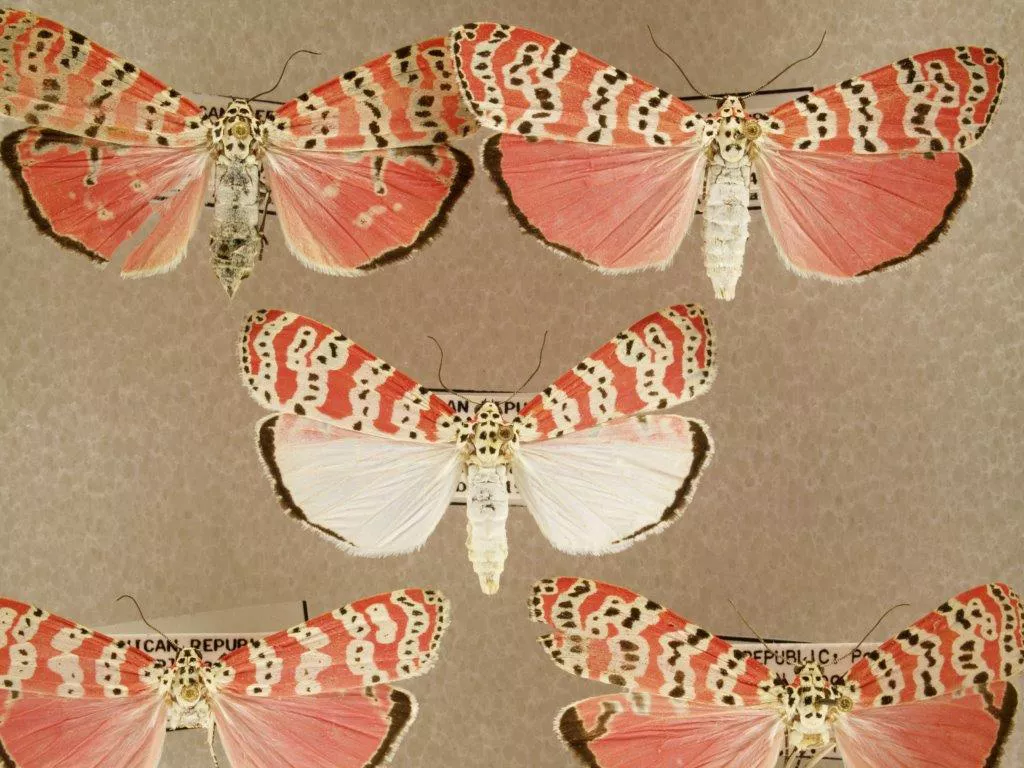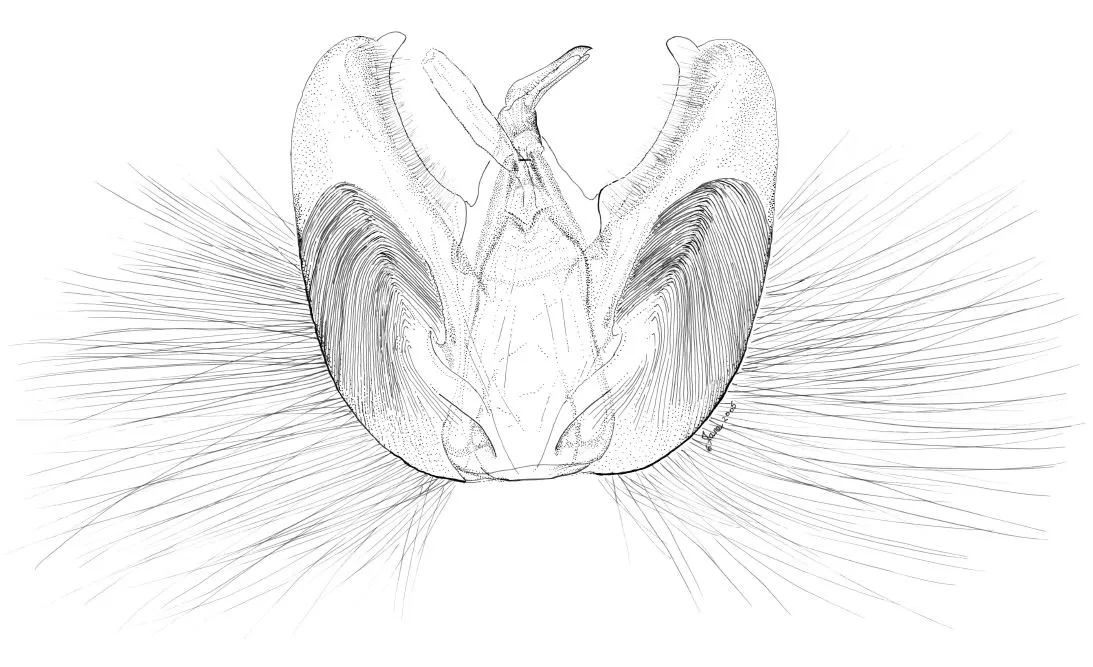By Jane Hyland
When a bug ends up suffocating for science, in a killing jar, put there by a collector or entomologist, to be taken back to the museum to be scientifically or aesthetically studied or illustrated or utilized in research in some fashion, you know there’s still hope for the world at large. Scientific endeavors into the wonders of nature are still possible…. For when humans no longer get the “collecting bug,” we know that the species has vanished from the earth. The species will have become endangered, then extirpated, then extinct. There will be no more mating going on.
Variation in Euthesia moth from the Dominican Republic.
Image courtesy of the Carnegie Museum of Natural history and Jane Hyland.
The loss of habitat and ruined ecosystems means millions of invertebrates lives that depended on these micro habitats vanish also. Most invertebrate life carries on unseen by the general human population and because this monumental bug activity takes place at night, a “silent spring” will persist after extinction, until mankind vanishes from the earth. Whence the invertebrates and plants will rise again.
Talking about the birds and the bees:
In order to copulate in the world of Lepidoptera, you have to be of the same species, with complimentary copulatory characteristics (the three CCC’s).
This means that the male and female genitalia feature a lock and key mechanism, which would make it impossible for Lepidoptera of another species to mate with a different species. In some Lepidoptera, the male ends up copulating away more than two thirds of his body weight. Exhausted after his dutiful mating, he then politely drops dead. (Typical!)
Illustration by Jane Hyland, moth genitalia.
The joy of being the Section of Invertebrate Zoology’s scientific preparator and illustrator is the daily joy in discovery and wonder of the natural world. I don’t actually think of the specimens I deal with as being dead. They are somewhat revived in the spreading process and laid out in all their minute micro-sculpting glory, and in their magnificent color variations and multitudinous forms, they spiritually and aesthetically regain another life. They are re-incarnated.
The scientists have unceremoniously killed them, only to bring them back to life for a different purpose, whether it be for natural history illustration or for inclusion in scientific studies, or inclusion into museum collections around the world. The world gets to see and discover species that have gone extinct 100 years ago, but we have only just rediscovered them fossicking through our Collection drawers, holding millions of entomological specimens. In some ways this loss and discovery (in science-based collections) is a symbolic reincarnation of that moth or butterfly.
Whether it be by the preparation every day of Lepidoptera by spreading 40 moths on a spreading block; to be the first person to set eyes on a new species in the lab; to be the person who has collected the specimens in foreign parts, in the middle of a montane forest or desert, or risked one’s life and limb in the deep jungles of the Congo, is even more marvelous and awesome, due to the ephemerous qualities of most insects. Working in a large insect collection such as we have at the Natural History Museum in Oakland as a natural science illustrator and preparator is always an exercise in natural wonder.



